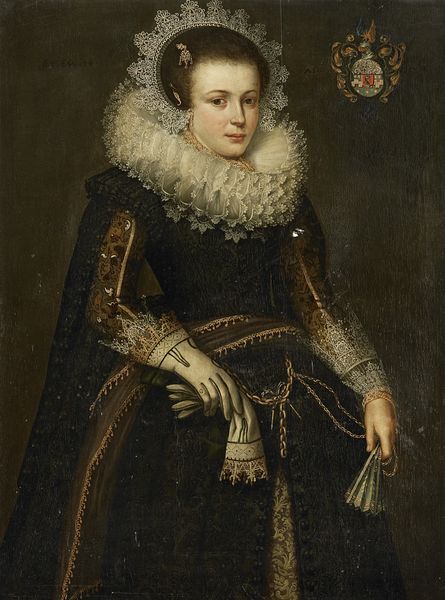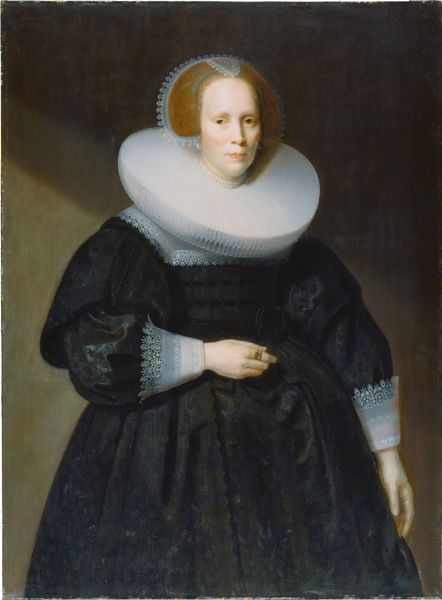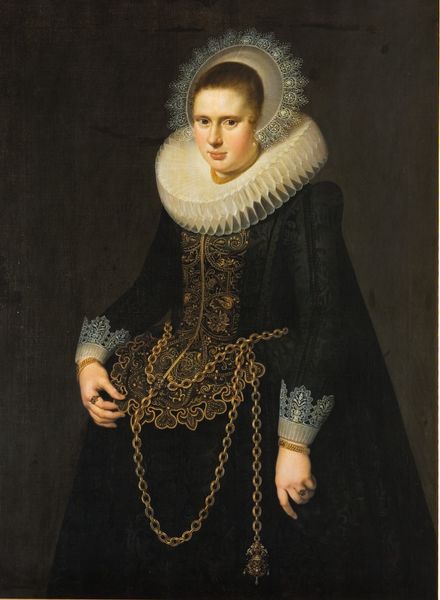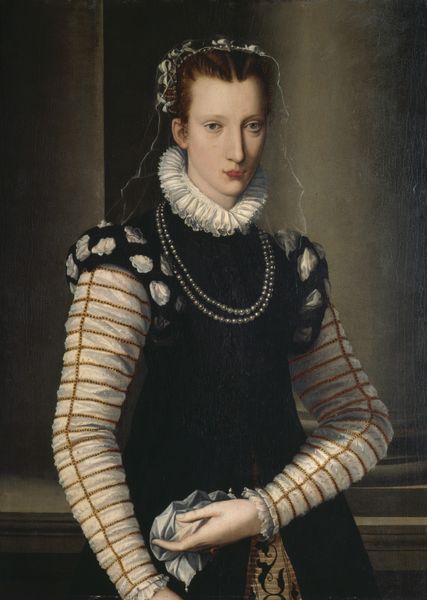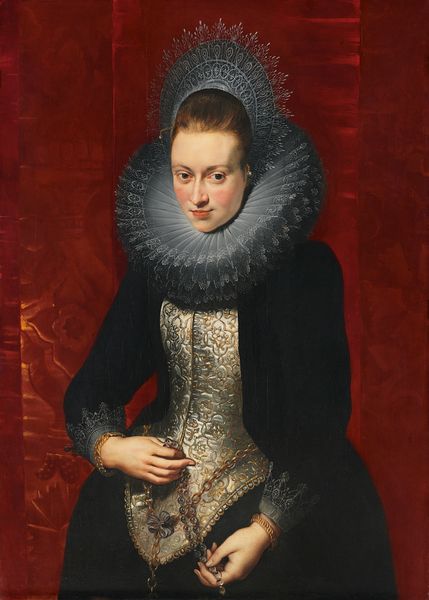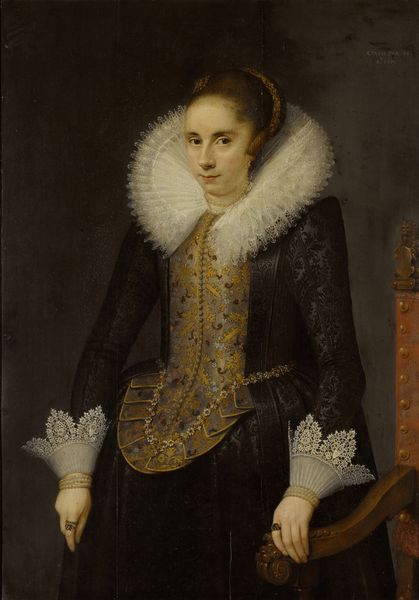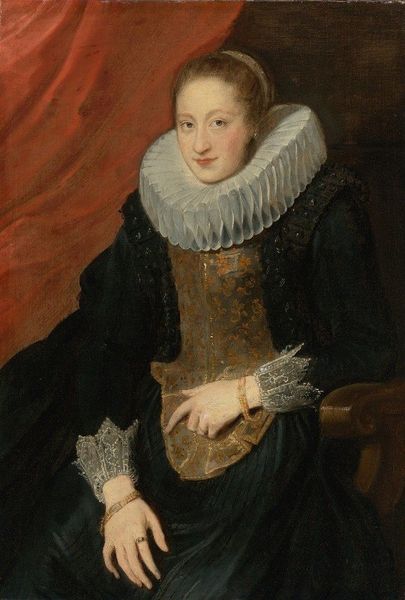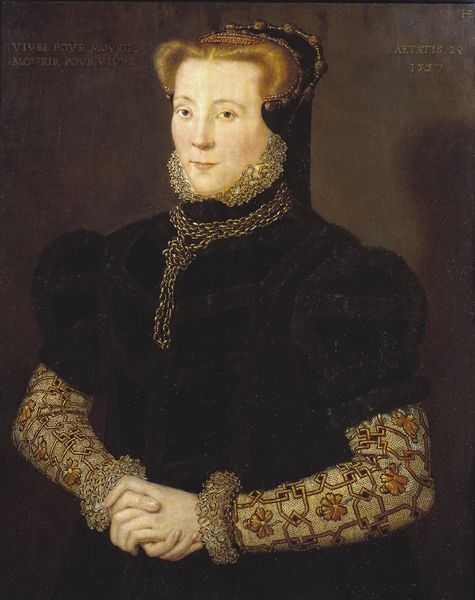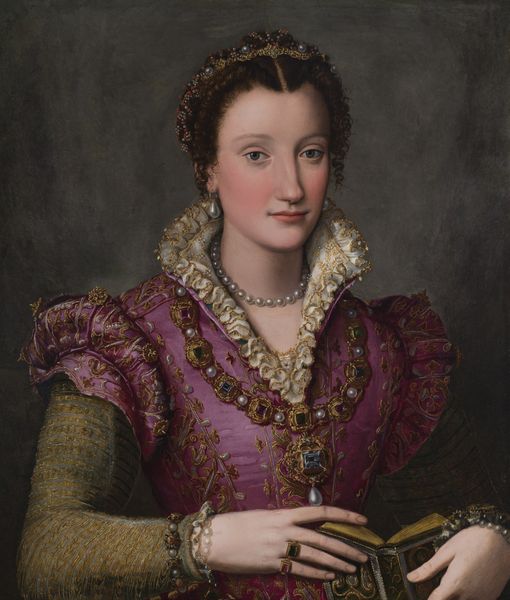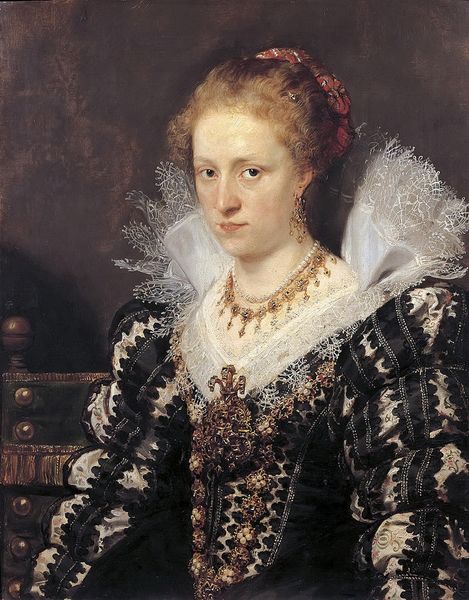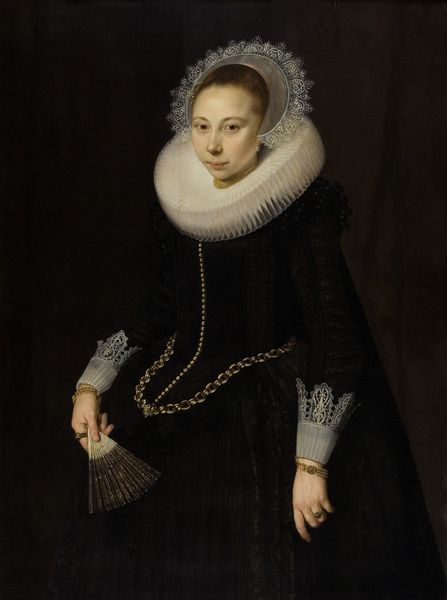
painting, oil-paint
#
portrait
#
painting
#
oil-paint
#
mannerism
#
figuration
#
history-painting
#
italian-renaissance
Copyright: Public domain
Curator: Well, the first thing that strikes me is the sheer, unadulterated formality of it all. Is she suffocating in that incredible ruff? It looks like a meringue! Editor: This is Lavinia Fontana's "Portrait of a Lady of the Court," painted around 1590. And it’s so much more than a meringue, although I understand the comparison. Curator: Fontana! Of course. There's a certain… softness, isn’t there? Less harsh than some of her contemporaries. A kind of approachable grandeur. It's almost… playful? Maybe it’s the dog? Editor: I think “playful” might be understating the socio-political statement here. Portraits like this weren't just pretty pictures; they were carefully constructed representations of status and power. Look at the exquisite detail in the brocade of her gown – each gold thread painstakingly rendered. This speaks volumes about her wealth and position. And consider, too, Fontana's position as a female artist navigating a male-dominated world. Curator: A tightrope walker in taffeta, absolutely! But what about the woman herself? Behind the finery, there's something... wistful, maybe? Do you think she’s truly present in the performance of status, or yearning for something else entirely? It’s funny how it almost feels like a collaborative piece – like the lady said "Paint me like one of your Italian girls…but don’t forget Buttons!" Editor: I appreciate your emphasis on Buttons, the dog, because even seemingly minor details are laden with symbolism. Dogs, historically, signified fidelity and loyalty—values highly prized in women, especially in aristocratic circles. But I also appreciate what you are saying about that human touch to what could easily have become mere decoration. Fontana seems to humanize the sitter just a touch, and at the same time quietly insists on the importance of female relationships. I wonder if that small touch of humanity comes from her being a successful working mother painting in the baroque. Curator: Oh, I love that interpretation! Because even in its strict formality, the art still has this undercurrent of tenderness that is, I feel, the heart of art. Editor: Right. So, in viewing this portrait, perhaps we're also invited to consider the unseen labor, the careful performance, and the quiet acts of defiance woven into the lives of women, both the artist and her sitter. A conversation across centuries!
Comments
No comments
Be the first to comment and join the conversation on the ultimate creative platform.
